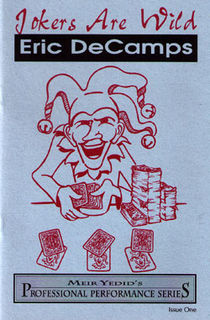Here’s the second video of me revising a packet trick that I got with a collection of magic that I acquired. Today’s trick is the A.C.T. (another card trick) by Bill Pryor.
Here’s a demo of the trick as written, then how I revised the trick:
The big problem with this packet trick is that the whole effect is a “kicker” without the initial ending. What I mean by that is that you start by asking someone to think of a card, but you never reveal it. You need the initial effect for a kicker to really work. I think at the end spectators will still be thinking, “what about the card I was thinking of?”
Also I don’t think the gags are strong enough to carry the trick past you never revealing the card they are thinking of.




